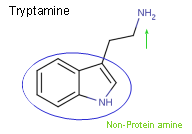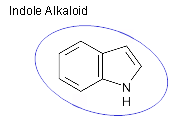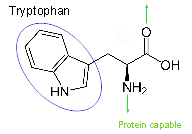Rules of life:
- stay alive
- reproduce
- avoid extinction
- protect your baby
Animals with internal gesttation can run and fight danger.
Birds and reptiles can protect their eggs (seed) by being around to fight off preditors.
Plants cannot run, cannot fight, but can hide poisons in dormant seeds that harm preditors.
Plant poisons are many
Here we will focus only on one
Tryptamine
monoamine, single amine (NH2)
neurotransmitter
up regulates serotonin receptors (agonist)

- phyco active, psycohedelic
- addictive
- toxic
Are you addicted to seeds?
Maybe not feeling so well?
Test your diet
stop
-> seeds, nuts, beans, soy, lentiles, legumes <--
see if you feel the difference.
What makes seeds toxic?
Alkaloids
- Alkaloids are amines synthesized by plants to protect them from being eaten
- Alkaloids are amines (NH2) but do not form into proteins <non-proteinogenic>
- Many biologically important compounds are amines.
- .
- Humans primarily use alkaloids medicinally as pain killers.
- All alkaloids are toxic and addictive.
- The Greeks killed Socrates with (S)-coniine.[conolidine]
- Alkaloid poisoning produce psychological effects
- Mild cases resembling peacefulness, euphoria or hallucinations.
- Addictive
Examples:
- morphine
- opium
- psilocin
- psilocybin
- tryptophan
Plant Seeds, psychoactive substances
- seeds
- poppy seeds
- beans
- Calabar Bean
- mushrooms
- magic mushrooms
- mold
- fungus
- ergotism
- whole wheat
- oatmeal
- cereals
- rye


Plant parts high in tryptophan
- nuts
- seeds
- beans
- tofu
- oats
- lentils
- the parts that make a new plant, their seed
Tryptamine
- monoamine alkaloid.
- trace amounts in mammal brains
- common functional group in tryptamines
- biologically active
- neurotransmitter
- psychedelic drug
- confusion
- brain fog
- anxiety
- panic
- plants do not want you to eat their seeds.
Eat no seeds, eat these:
- leaves -- cabbage, kale, spinach
- stems -- asparagus
- bark -- cinnamon
- tubers -- carrots, potato, garlic, onion
- fruit with seeds, e.g. tomato, strawberries, blueberries,
- vegetables with seeds, e.g. cucumber, green beans,
---------------
Technical stuff, should be on a separate page
There are also purely structural classifications based on the presence of carbazole, β-carboline or other units in the carbon skeleton of the alkaloid molecule.
Some 200 dimeric indole alkaloids are known with two indole groups.
Non-isoprenoid:
- Simple derivatives of indole
- Simple derivatives of β-carboline
- Pyrroloindole alkaloids
- Indole-3-carbinol
- Indole-3-acetic acid
- Tryptamines [tryptophan amino acid, 'chicken']
- Carbazoles
Isoprenoid:
- hemiterpenoids: ergot alkaloids
- monoterpenoids.
- Strictosidine
- Catharanthine
- Yohimbine
- Vinca
- Strychnine
- Ellipticine